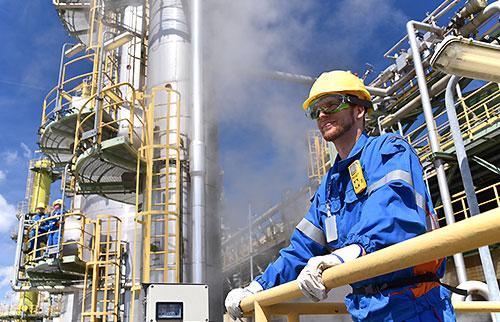Buy and assign to
multiple learners
Instant access
via email link
Instant certificate
via email
Further Information - Control of Work Awareness Level Training
Description
Course goal: This Control of Work Awareness Level Training course is designed to inform and train people to achieve a much higher level of understanding of roles, responsibilities and accountabilities within SSOW. It aims to ensure that all members of the global Oil and Gas workforce have a consistent and common understanding and approach to Control of Work to enable it to be consistently applied across the Industry.
Target Audience: Work Party Members
Sections:
Section 1: Course Overview
Section 2: Introduction to Safe Systems of Work (SSOW)
Section 3: Case Studies
Section 4: Work Control Certificates and Supporting Documentations
Section 5: SSOW Roles and Responsibilities
Section 6: Hazard Identification and Risk Assessment
Section 7: Communication
Section 8: SSOW User
Section 9: Course Summary
Learning Objectives
Section 1: Introduction to Control of work
• State the purpose of a permit-to-work system
• Explain the principles of work control, and how work is controlled within typical permit-to-work systems
• Identify the main types of control of work documents (hot work, isolation certificates etc.) and explain their purpose and why they are cross-referenced to each other
• Identify the main roles within a typical permit-to-work system and the function of each role
Section 2: Hazard Identification and Risk Assessment
• Define common risk assessment terminology
• Identify common ways of grouping oil and gas industry workplace hazards
• Give examples of work-related hazards and explain the associated risk element
• Explain the purpose of a task risk assessment
• Identify and explain the main steps of a typical task risk assessment process
• Identify and explain typical controls that would be put in place to eliminate or reduce such risks
Section 3: Controlling Work Activities
• Identify and explain typical steps in planning and preparing for the work activity/activities
• Explain the requirement to communicate effectively with everyone involved at the worksite (team briefings, toolbox talks etc)
• Explain why regular worksite visits and inspections are important
• Explain how unplanned changes to the work plan and changes to the workplace conditions can affect worksite safety; the PA’s responsibility to respond appropriately to the changes
Section 4: Handover, Work Suspension and Completion
• Explain the requirement for effective handovers
• Identify typical reasons for suspending work
• Identify typical steps in suspension of work
• Explain typical work completion requirements
• Explain how lessons learned from work activities should be captured and recorded
• Explain how waste from work activities can be managed according to local site rules
Assessment
Exam in the e-learning course
System Requirements
• Internet access - users will need a device with a web browser and internet connection
• System - runs on computers, tablets and mobile devices using Windows 7 and above and MAC OS devices running IOS 11 and above
• Browsers - Edge, Chrome, Firefox and Safari
• Minimum browser size - none
• Audio - requires device speaker or headphones
Reviews
Insights & News
At Mintra, we're so much more than just a team—we're a force driving innovation and excellence in maritime training across Europe.
We’re excited to be taking the stage at one of Europe’s leading showcases of organisational learning.
We are delighted to share the exciting news that our People and Culture team has been shortlisted for the prestigious cHeRries Awards!




